How to grow organic cannabis at home
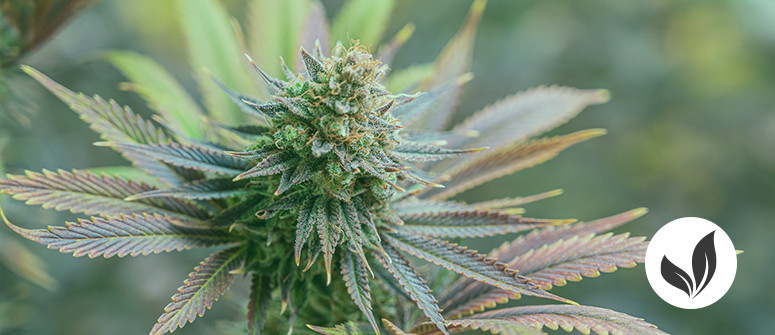
Going organic isn't just a fad; switching your cannabis garden over to organics has many benefits, including more aromatic flowers, reduced costs over time, and the satisfaction of working in tandem with the natural environment. Find out how to successfully grow organic weed from the comfort of your own home by focusing on three key pillars.
Contents:
Consumers are more conscious than ever before, and the market for organic or environmentally friendly products, especially food, is growing steadily.¹ But it's not just regular consumers who are going green; many cannabis consumers are just as interested in buying weed or cannabis-derived products that are produced organically and sustainably.
If you're conscious about the impact your love for cannabis has on your body, and the world around you, you're in luck. In this article, we take an in-depth look at what defines organic cannabis and, more importantly, how you can easily grow organic weed at home.
WHAT IS ORGANIC MARIJUANA?
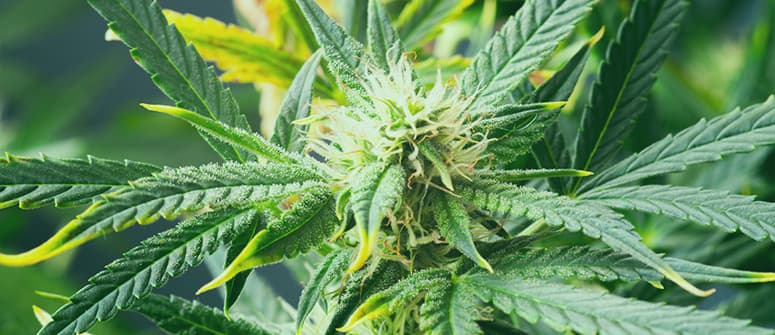
Before we look at the process of growing organic weed at home, we need to have a solid understanding of what organic actually means. Broadly speaking, organic farming involves the use of only natural substances. Unfortunately, there are still no global standards for organic farming, but in general, organic methods:
- Avoid the use of synthetic fertilisers and pesticides/herbicides, as well as growth hormones and antibiotics
- Cycle and recycle resources
- Promote ecological balance and biodiversity
- Avoid the use of genetically modified organisms
If we apply this definition to a home cannabis grow, it would basically involve growing organic cannabis seeds (see below) in a natural medium and using only natural fertilisers and pest management practices. Moreover, growing an organic cannabis crop would also involve finding sustainable ways to get rid of waste, recycle raw materials, and cut energy and water usage.
CAN YOU BUY ORGANIC CANNABIS SEEDS?
Due to nearly 100 years of cannabis prohibition, the cannabis industry is still very much playing catchup in a lot of areas, and organic seed production is one of them. While a few seed banks promote themselves as organic, a lack of standardisation and regulation makes it very difficult to judge whether these brands are actually organic. We recommend being very diligent when shopping for organic cannabis seeds, and contacting seed banks directly to ensure their seeds really are organic.
WHY GROW ORGANIC CANNABIS?
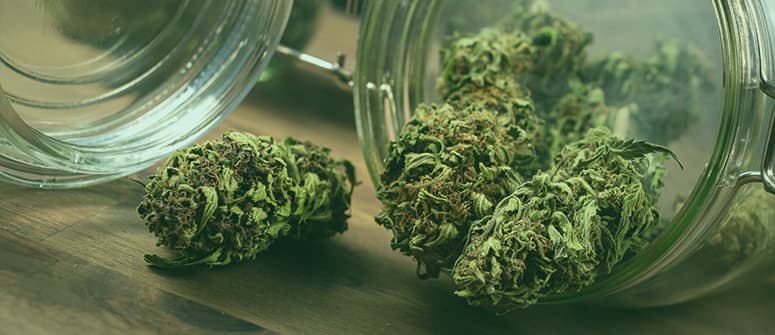
Growing organic cannabis has myriad potential benefits, including:
- Improved aroma and flavour: Most growers agree that organically grown cannabis has superior aromas and flavours to weed that is not grown organically.
- A cleaner end product: Going organic gives you peace of mind when it's time to light up, as you can rest assured that your bud is free of harmful toxins that may be present in non-organic fertilisers, foliar sprays, or pesticides/herbicides.
- Reduced costs: While the outright costs of organic media, fertilisers, and pesticides can quickly add up, adopting sustainable growing practices such as composting, organic soil re-composition, solar energy, and rainwater harvesting can all dramatically reduce the cost of your grow over time.
- A closer connection with nature: Composting, preparing your own super soil, and getting your hands dirty in the garden is one of the best ways to reconnect with nature, especially in a world so driven by instant gratification.
WHAT ARE THE CONS OF GROWING ORGANIC WEED?
Growing organic cannabis has few notable “cons”. It does, however, have certain limitations that make it infeasible for certain growers. These include:
- Everything is slower: If you're used to the speed of a regular cannabis grow, transitioning to organics might shake you. Whereas non-organic fertilisers are prepared in a way that makes their nutrients readily available to plants, organic nutrients need to first be broken down by microbes in the growing medium, and therefore have a much more gradual impact on how the plant grows and develops.
- More expensive upfront: The outright cost of running an organic garden is usually higher than with a regular cannabis garden. Organic fertilisers and media tend to be more expensive than their non-organic counterparts, and investing in solar energy or rainwater tanks for a more sustainable garden also comes at a price—one that’s significantly higher than that of setting up a non-organic grow in a small tent.
- Organic yields tend to be lighter: Again, if you're used to the XL yields of a non-organic cannabis garden, your first organic harvest could disappoint you. Like other crops, cannabis plants tend to yield less when grown organically than when grown non-organically.
ORGANIC CANNABIS CULTIVATION: INDOORS VS OUTDOORS
Cannabis can be grown organically both indoors and outdoors. However, some aspects of organic cultivation, such as composting, lend themselves better to the outdoors. However, don't let that be a deal-breaker; with just a bit of ingenuity, you'll find that there are infinite ways to adapt organic growing practices to suit even small indoor spaces.
HOW TO GROW CANNABIS ORGANICALLY
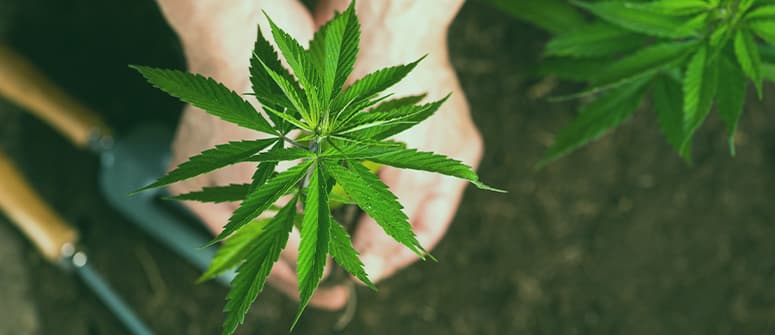
Ready to get your hands dirty? Below you'll find a basic, actionable walkthrough on how to grow organic weed at home. To simplify the complexities of organic agriculture and tailor it to home cannabis cultivation, we'll focus on three main pillars of organic growing: soil, nutrients, and pest control. While organic agriculture encompasses many other topics, we believe these areas are the most relevant and easiest to implement for the hobby weed grower.
ORGANIC SOIL
We highly recommend using soil for your first couple of organic grows, as it is arguably the medium best suited to organic cultivation. While it is completely possible to grow organically in hydro setups, it is a little more technical. An organic soil grow, on the other hand, is something most hobby gardeners should be able to get going with minimal effort.
Soil is the lifeblood of your garden. If prepared properly, your soil can hold complex nutrients and microbial life that not only breaks down these nutrients into plant-usable parts, but also helps to protect them from pathogens and pests—this complex ecosystem is known as the soil food web. To create a rich home for your plants, you'll first want to prepare or buy a soil enriched with compost and other natural fertilisers, and then learn to maintain a rich soil ecosystem to see your plants through from seedling to harvest.
COMPOST AND OTHER COMPONENTS OF ORGANIC SOIL
There are countless recipes for organic soil online. One of our favourites, due to its simplicity and effectiveness, uses the following core ingredients:
- 1 part store-bought organic soil
- 1 part compost
- 1 part worm castings
- 1 part coco coir
- 1 part vermiculite
- 1 part perlite
To this base, we recommend adding:
- Diatomaceous earth — 10g per litre of soil mix. Rich in minerals and acts as a repellent for many pests and pathogens.
- Dolomite lime — 7g/litre of soil mix. Rich in magnesium and calcium, effective at stabilising soil pH. Remember to use fine powdered dolomite lime as this can be readily absorbed by your plants.
- Bat guano — 7.5g/l of soil mix. Rich in macro and micronutrients, particularly nitrogen.
- Epsom salt — 6g/l of soil mix. Rich in magnesium and sulphur.
- Mycorrhiza and trichoderma — 1g mycorrhiza + 1g trichoderma per litre of soil mix. These beneficial fungi promote root growth and healthy microbial life in the soil food web.
- Fish meal — 6g/l of soil mix. Adds extra macronutrients (nitrogen and phosphorous) and beneficial natural organisms.
- Bone meal — 6g/l of soil mix. Adds potassium and natural organisms.
Combined, these ingredients will form a healthy, active soil that'll promote rooting during your plants' seedling phase, as well as provide them with plenty of food throughout their first 3–4 weeks of vegetative growth.
UNDERSTANDING THE SOIL ECOSYSTEM
Traditionally, cannabis growers either grow their plants in a balanced soil, or they use an inert medium like coco coir or clay pellets and then periodically feed their plants with synthetic nutrients. These fertilisers contain high concentrations of nutrients that are ready for plants to consume outright, and therefore need to be dosed carefully to avoid over or under-feeding.
When growing cannabis organically, it is recommended to start your plants off in a rich super soil like the one outlined above. These soils contain high concentrations of organic matter that will feed your plants gradually throughout their life cycle. In order for your plants to absorb these nutrients, your soil needs to have a rich ecosystem of microbial life to break down the organic matter and make the nutrients usable for your plants.
The super soil recipe we outlined already contains microbial life forms, but you can add to them using natural soil supplements and organic fertilisers like those listed below.
ORGANIC NUTRIENTS
Organic nutrients come in all shapes and sizes, and are readily available at gardening centres, nurseries, and specialised grow stores. Some of our favourite organic fertilisers include:
- Worm castings or compost for nitrogen
- Fish or bone meal for phosphorus and potassium
- Guano for nitrogen, phosphorus, and potassium
Most of these fertilisers come in both dry and liquid form. Dry fertilisers work great for top-dressing your plants’ soil, while liquid fertilisers can be mixed with water and used like a regular chemical fertiliser. When using liquid fertilisers, always remember to dissolve them in non-chlorinated water, as chlorinated water will kill the natural organisms present in your soil.
Thanks to the growing interest in organic cannabis cultivation, multiple fertiliser companies now offer lines of "bio" or organic products that are designed to be used like regular chemical fertilisers. When shopping for organic fertilisers of this kind, make sure to do your research to ensure the product you're choosing is in fact organic.
ORGANIC VS CHEMICAL FERTILISERS
Unlike chemical fertilisers, aka synthetic fertilisers, organic nutrients are derived from natural sources. They contain nutrients in the form of organic material, such as decomposed plant matter (compost), animal faeces (worm castings, bat guano, or manure), or animal remains (fish, bone, or blood meal).
Organisms in the soil will gradually feed on and break down these natural ingredients, creating compounds that plants can absorb. As a result, using organic nutrients is a much slower and more gradual process. This is important to keep in mind, especially if you're transitioning from non-organic to organic cannabis cultivation; remember that your plants will take more time to grow and develop, but you'll also run into fewer problems with over or under-feeding.
COMPOST TEA
If you compost at home (which we highly recommend if you're considering getting into organic growing), compost teas are a great alternative to simply topdressing your soil with compost; they make some of the insoluble compounds of regular compost available to your plants immediately, in liquid form.
The simplest way to make compost tea at home is to pack compost into a porous bag (such as a burlap sack) and let it soak in non-chlorinated water for 8–12 hours. We recommend using a ratio of 1 part compost to 5 parts water. After 8 hours, remove the compost, and water your plants with the tea as normal.
For better results, you can also brew your own aerated compost tea (ACT). Here, you'll soak your compost as described above, but you’ll also use an air pump to continually aerate the soaking mixture for 24 hours. This will promote the growth of beneficial microbes in the tea, which will then help to strengthen the ecosystem in your soil.
ORGANIC PEST CONTROL
Pest control is an important topic in cannabis cultivation, especially if you grow outdoors. While some strains of cannabis are more resilient to pests and pathogens than others, most growers run into pest problems at some point in their journey. To avoid pest problems when growing organically, we recommend using a combination of companion planting, predatory insects, and natural pesticides to keep your plants protected.
COMPANION PLANTING & PREDATORY INSECTS
Companion planting involves growing non-cannabis plants alongside your weed crop to protect it against pests. Not only that, but companion planting can be a great way to boost soil and plant health all around. But in the realm of pests, companion species can be used to either divert or repel cannabis-loving critters.
A number of plants naturally repel pests, including:
- Basil
- Citronella
- Nasturtiums
- Rosemary
- Petunias
- Thyme
- Lavender
We highly recommend growing your cannabis plants alongside a few of the abovementioned herbs and flowers as a way to keep pests away from your weed. The great thing about many of these species is that, in addition to repelling pests, they also draw in beneficial insects that act as another form of pest control. Such predatory insects will spot any nasty critters on your plants and make quick work of them. Examples of beneficial insects include:
- Ladybugs
- Praying mantis
- Green lacewings
- Predatory mites
- Nematodes (to protect against soil-borne pests)
NATURAL PESTICIDES
Besides companion planting, we also recommend spraying your cannabis plants with natural pesticides to further help protect them from pests and pathogens. While there are many recipes for organic pesticides online, our favourite is composed of:
- 1l non-chlorinated water
- 15ml potassium soap
- 5ml neem oil
- 1 teaspoon diatomaceous earth (only suitable for use on non-flowering plants).
Combine this mixture well, and spray it on the stems and leaves of your plants once a week as a preventative measure. Do not spray the flowers! If you see pests or their eggs, we recommend hosing down your plants with water first, and then spraying with the above mixture 2–3 times daily until the pests disappear. Once they're gone, revert back to a weekly preventative spray.
IS ORGANIC CANNABIS BETTER?
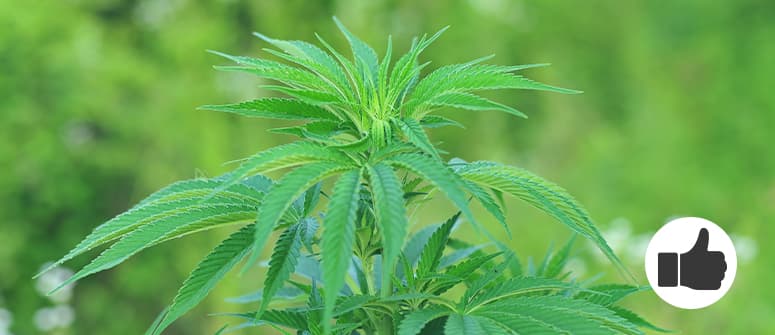
Growing organic marijuana has a lot of benefits, and is highly recommended for anyone looking to run a more sustainable garden and harvest cleaner, more aromatic, and flavourful buds. While organic weed plants tend to yield less than those grown with chemical fertilisers, we believe the trade-off is well worth it for any home grower.
References:
Organic Foods Market Size, P., 2022. Organic Foods Market Share, Size, Trends | Global Report 2029. [online] Fortunebusinessinsights.com. Available at: <https://www.fortunebusinessinsights.com/industry-reports/organic-foods-market-101470> [Accessed 17 May 2022].




